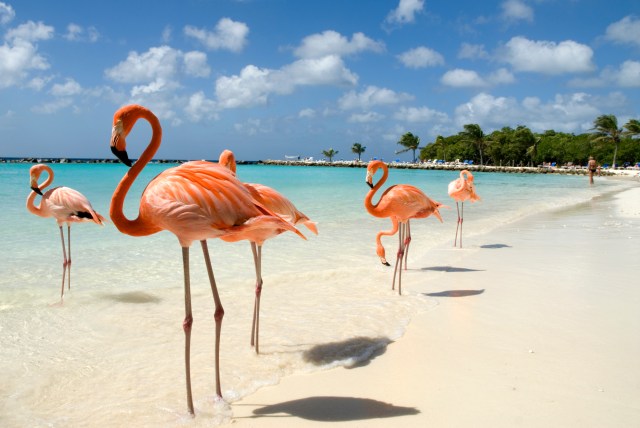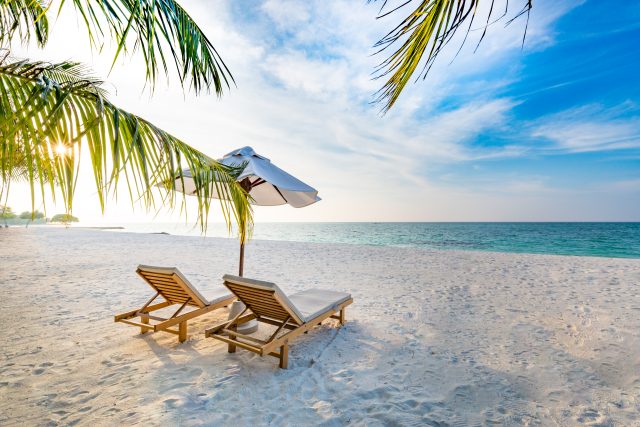From relaxing on the sand with a drink and listening to the sound of the ocean, to building sandcastles and catching waves on your board, there’s nothing quite as lovely as a beach vacation. And if you love going to the beach, it makes sense to do so in the most sustainable and responsible way.
Helping take care of the ocean and beaches now will help ensure that future generations will also get the chance to have a beautiful beach vacation. Ideally, the beach you visit should be a better place because of your visit. Aim to be a part of the solution and not the problem.
Here are some things to try out as you plan your next beach vacay to make it more sustainable.
Be Mindful of What You Bring
Sunscreen is a must-have when you’re at the beach, but not all sunscreens are created equal when it comes to the health of the ocean. Chemical sunscreens cause damage to coral reefs and other wildlife. A better alternative is a mineral sunscreen, which will still protect you from the sun but will also help prevent damage to the marine ecosystem.
Chemical sunscreens have been banned in some places, including the U.S. Virgin Islands and Hawaii, to help preserve their coral reefs. Some beaches have reef-safe sunscreen available at the beach itself. Raw Elements USA, for example, makes a range of mineral sunscreen products, and they’ve installed dispensers for their reef-safe sunscreen at beaches in Rhode Island and Hawaii.
Every year, some eight million tons of plastic end up in the ocean. Help reduce plastic waste on your trip by bringing along non-plastic straws, travel mugs and water bottles. If you’re traveling with kids, pick non-plastic, biodegradable beach toys that are built to last, like LoveLotte’s Eco Beach Toys.
Invest in sustainable swimwear that’s made from recycled material and will stand up to the rigors of salt water, chlorine and the sun. Bromelia Swimwear is all about ethically producing high-quality swimsuits made from renewable materials. Founded by surfer Kelly Slater with a commitment to sustainability, Outerknown uses recycled materials to make many of its swimsuits, and they’ll recycle the suit for you when you’re done with it.
Plan Your Vacay the Sustainable Way
Transportation
If you’re flying to your destination, it makes the most sense in terms of emissions to go on one longer trip in a year than a handful of shorter trips, so try to bank those vacation days as best you can.
Some airlines are focused on sustainability, like Hawaiian Airlines, which has partnered with Conservation International for carbon offsets and is dedicated to flying efficiently to reduce carbon emissions on each flight. Delta Airlines is working towards net-zero emissions by 2050 and is reducing single-use plastics in the cabin.
Here are some questions to ask yourself on your beach vacation to help you rely less on gasoline-powered cars and reduce carbon emissions.
- If you’re going to drive, could you rent an electric car for your trip?
- Is there a way to get where you want to go by train?
- Is there public transportation that you can use?
- Is it a walkable destination?
Staying
There are other small decisions you can make that can add up to a big difference. At the hotel, ask for housekeeping not to come for a day or two to cut down on the water used to wash your sheets and towels. And choose a hotel that doesn’t use single-use toiletries. Over the past few years, Marriott Hotels and Hyatt Hotels have started using larger, pump-style bottles for things like shampoo, conditioner and body wash.
Buying
As far as souvenirs go, it might be tempting to pick up something like a mass-produced t-shirt or cheap trinket, but instead, seek out something made by a local artisan. Not only will you be supporting a local business, but buying local also cuts down on carbon emissions. Be aware of the packaging; if it’s wrapped in plastic, maybe leave it on the shelf and pick up something else.
Eating
Dining out when you’re at the beach is the perfect time to get tasty, fresh seafood, but be mindful of what you’re eating. The Monterey Bay Aquarium Seafood Watch program rates seafood on how sustainable it is, with regional digital guides that will tell you the best choice to eat, as well as what to avoid. Take the time to ask your server where the fish is from to make the best decision.

Support Sustainably Minded Destinations
Carefully choose where you’re going and support the destinations that are working on sustainability practices. No place does everything perfectly for the planet, but some do more than others. Santa Monica, California, for example, recently achieved LEED Platinum City status, in recognition of its work on healthy green spaces, renewable energy and transportation options.
Destinations where nature takes center stage can help reinforce the importance of protecting the environment, like Little St. Simons Island off the coast of Georgia. The barrier island has seven miles of beaches, thousands of acres of marsh and upland filled with wildlife, and a 32-room resort with a conservation center and daily naturalist-led hikes. In South Carolina, the Sanctuary at Kiawah Island Golf Resort has a nature center, restaurants that support sustainable agriculture and opportunities for guests to help with things like loggerhead sea turtle nest counts.
Check to see if the beach you’re visiting is part of a marine sanctuary. Many of these protected areas have visitor’s centers, which are often free and with activities for kids and adults, like the Monterey Bay Sanctuary Exploration Center in Santa Cruz, California, and the Florida Keys Eco-Discovery Center in Key West, Florida. You’ll come away with a greater understanding and appreciation of the unique ecosystem and how you can help protect it.
Practice “leave no trace” principles when you’re at the beach and don’t leave anything behind. Or go above and beyond and take some time to collect any trash others may have left behind or that’s been washed up by the waves. It’s something you can do as a family, even making a game of it to see who can collect the most. You can also connect with a local organization for an official beach cleanup, during which you can learn more about the area you’re visiting, meet locals and feel more connected to your beach destination.
How do you plan to be more sustainable when visiting the beach this year? Tell us in the comments.
Learn how AAA Northeast is becoming more sustainable. Visit AAA.com/ESG to read about our environmental, social and governance initiatives and how we are progressing on these goals.
AAA’s sustainable travel series is written in partnership with Kind Traveler, a women-and-veteran-owned sustainable travel platform empowering travelers to make a positive impact in local communities, and contributing writer, Kristin Conard.
2 Thoughts on “How to Plan a Sustainable Beach Vacation”
Leave A Comment
Comments are subject to moderation and may or may not be published at the editor’s discretion. Only comments that are relevant to the article and add value to the Your AAA community will be considered. Comments may be edited for clarity and length.















I signed up for AAA a few weeks ago – paid for membership. Haven’t heard a word from you, no mailings, no membership ID. Please advise ASAP!! Thank you ~
Hello Merem, thank you for reaching out! I have forwarded your information to our Membership team. Someone will reach out to you directly. Thank you – Aleshi